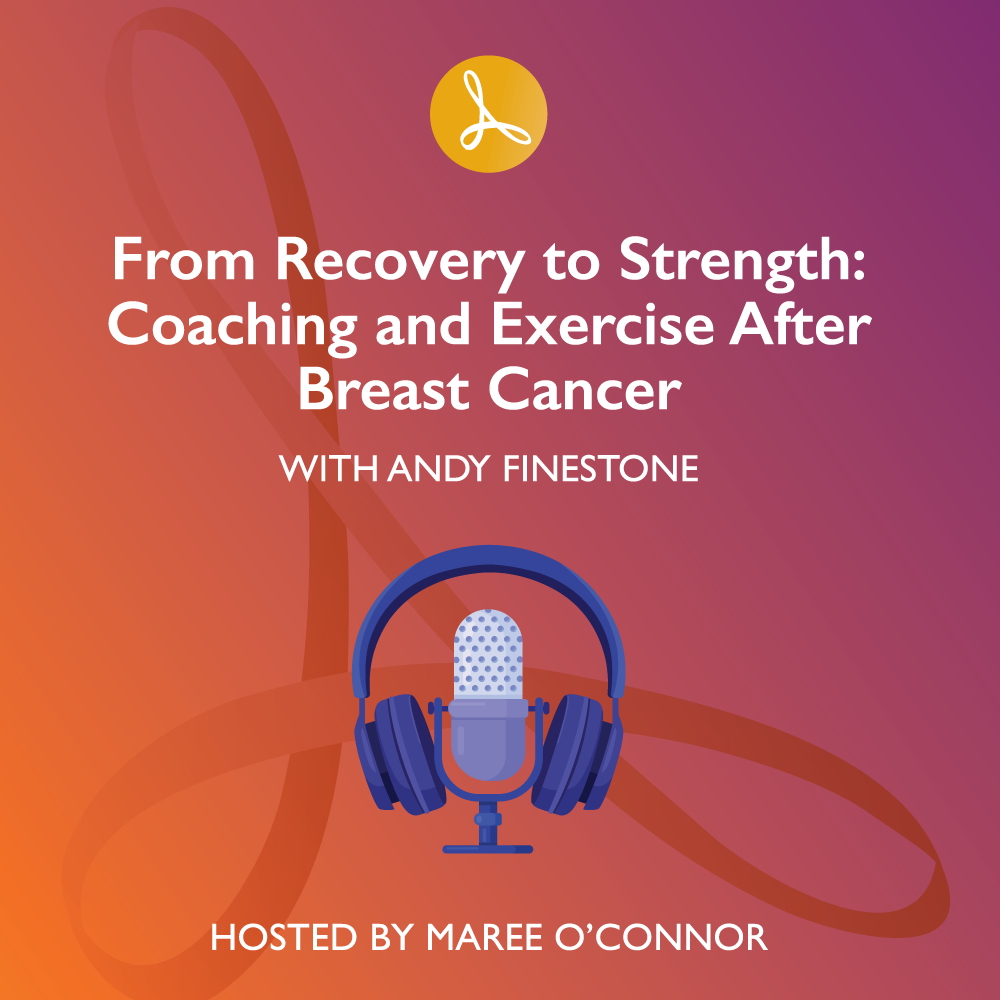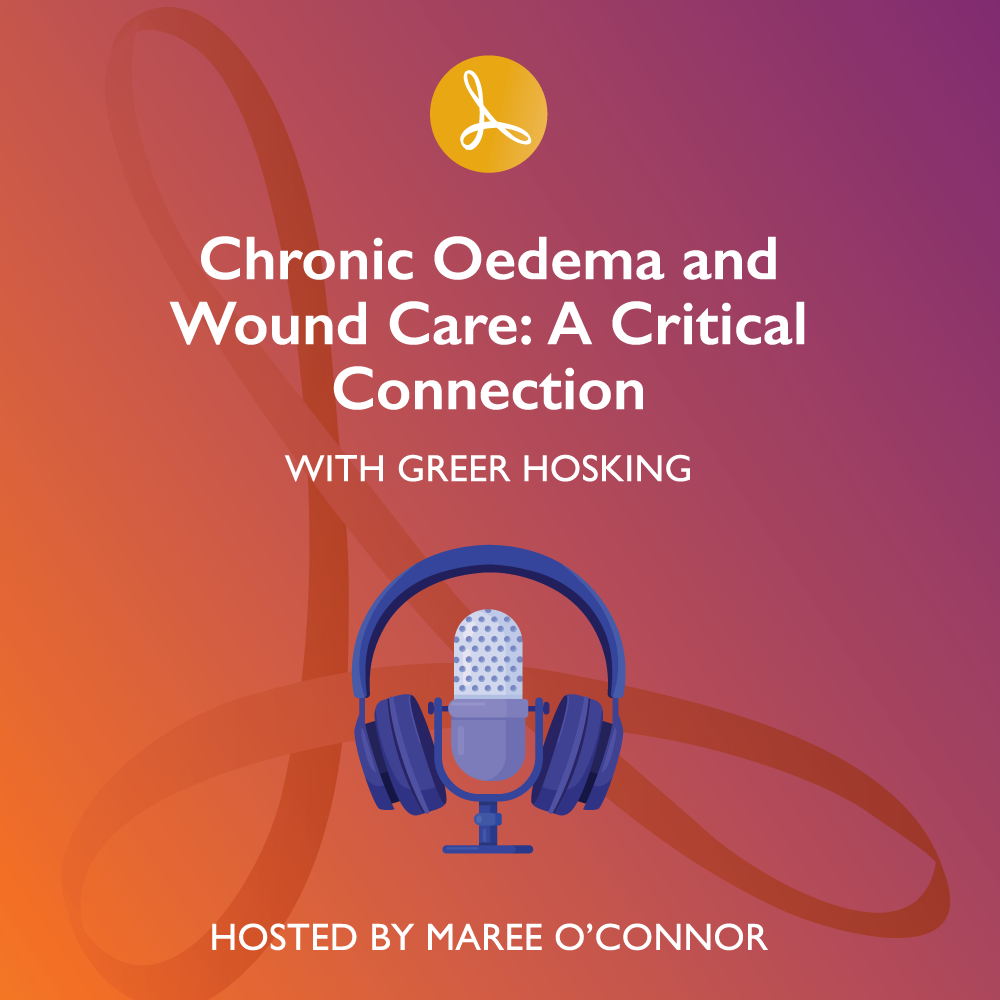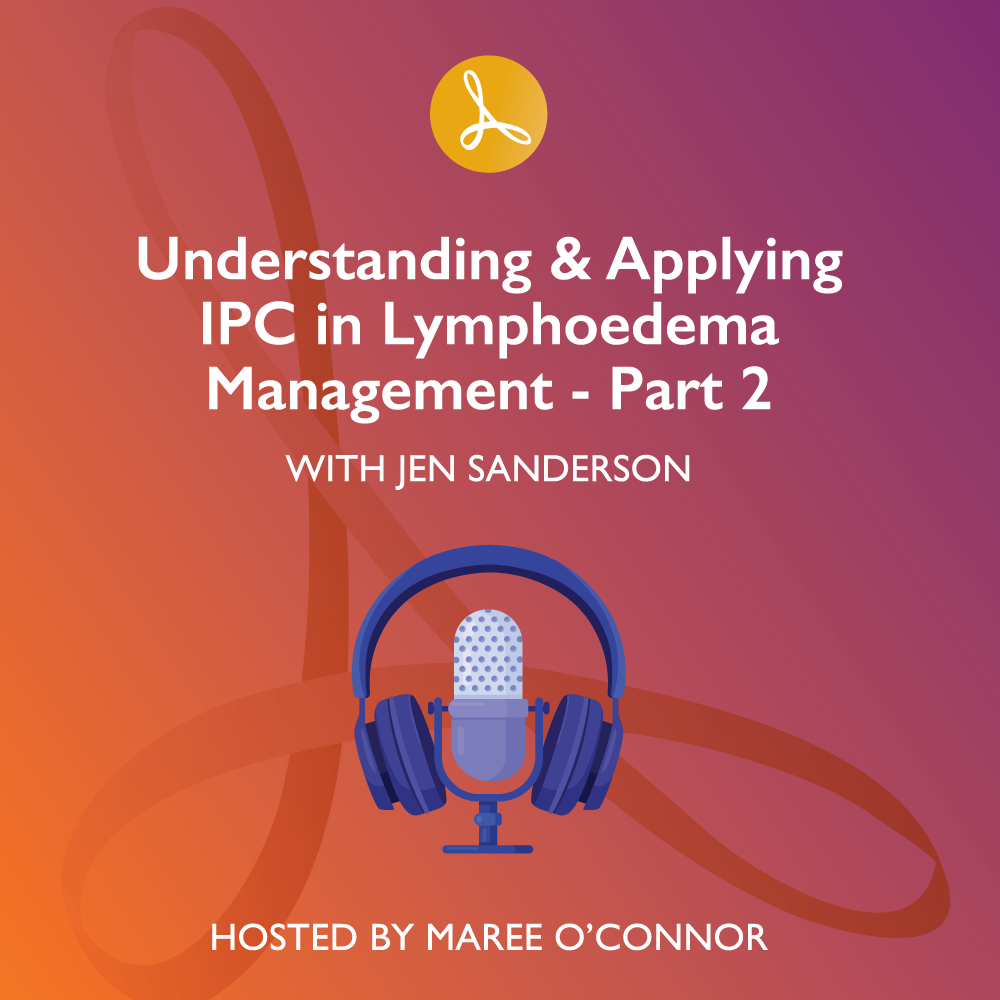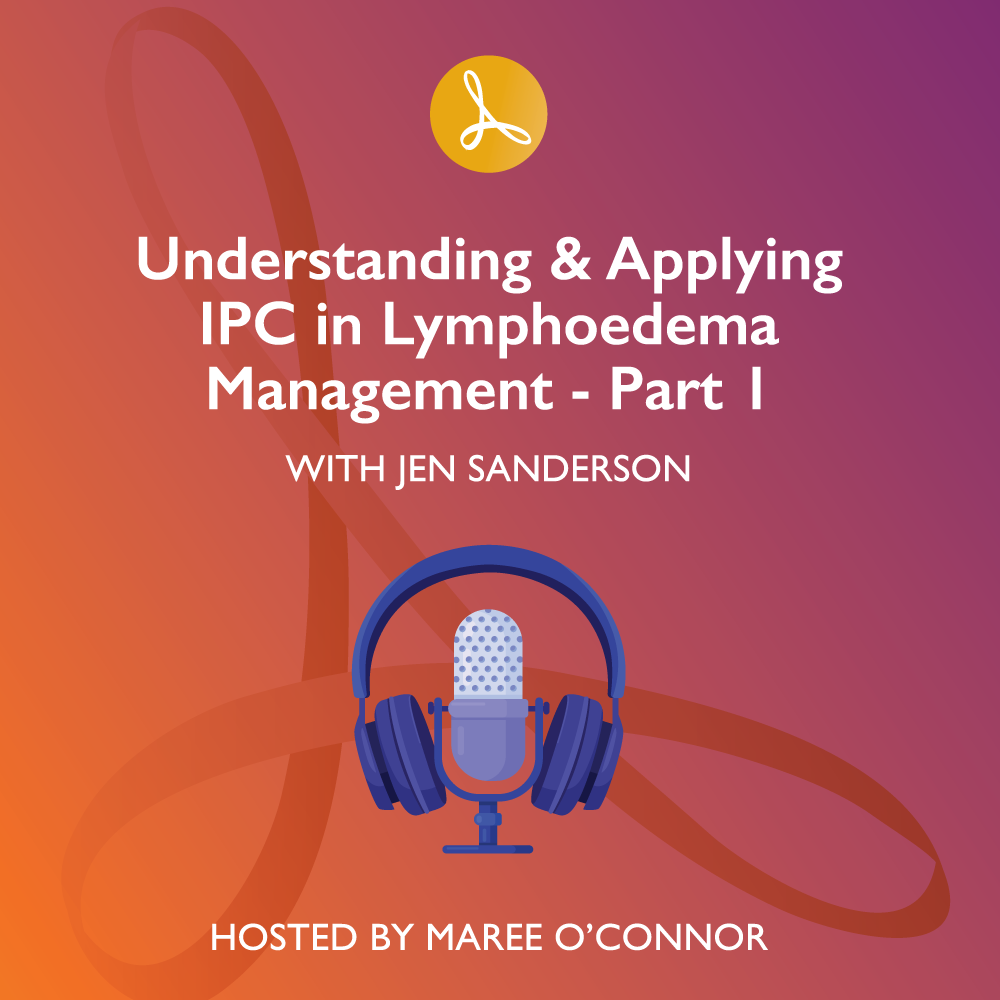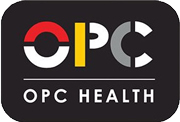From Recovery to Strength: Coaching and Exercise After Breast Cancer
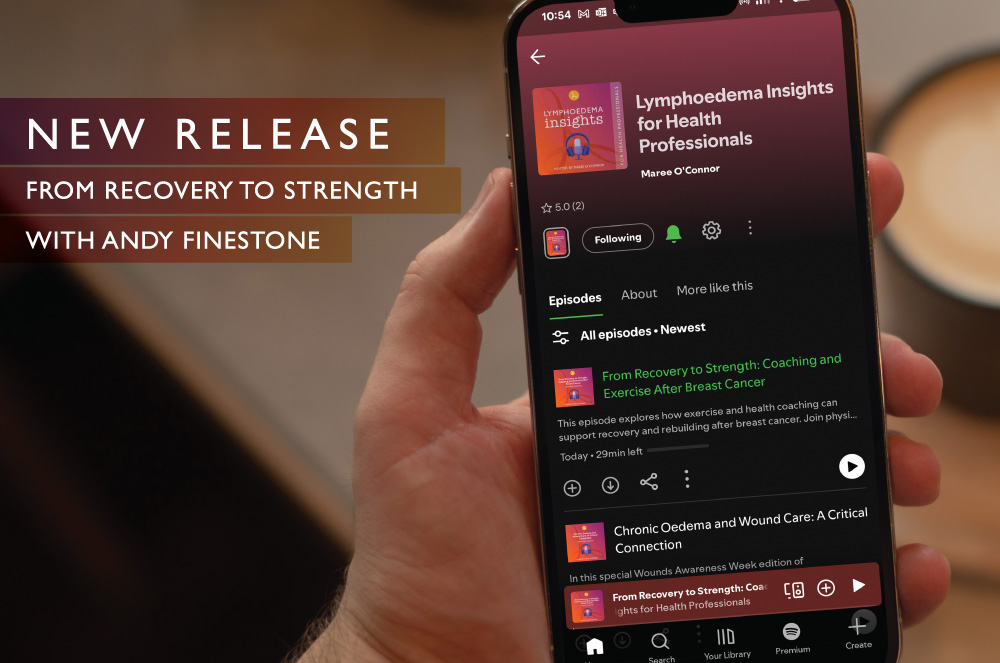
In this Lymphoedema Insights podcast episode, Maree O’Connor speaks with physiotherapist and health coach Andy Finestone about how exercise, mindset, and health coaching can support recovery and wellbeing after breast cancer.
🎧 Listen to Episode 4
About our guest speaker: Andy Finestone
Andy Finestone (Gild) OAM is a Physiotherapist and an Accredited ICF Coach with a focus and passion for Wellbeing and Communication. She brings a deeply holistic perspective to human performance and wellbeing, giving her a unique lens on both physical and mental resilience.
Working in both the health and corporate space, Andy has a knack for making the latest neuroscience simple and practical. Her coaching focuses on boosting energy, lowering stress and creating sustainable, lifelong change. She helps build confidence to step into vulnerability and bring curiosity leading to more effective conversations that drive trust and impact.
Challenges After Breast Cancer
Recovery can involve more than completing treatment; it might also include rebuilding strength, confidence, and wellbeing.
People may face barriers to returning to exercise, such as:
- Fatigue, pain, and physical limitations.
- Stress, anxiety, uncertainty, or sleep disruption.
- Feeling overwhelmed or lacking confidence.
Compared with the general population, those recovering from cancer may encounter additional challenges in integrating exercise into daily life.
Andy highlights the importance of self-compassion during recovery. Fatigue and motivation can fluctuate, and progress is rarely linear. Recognising and celebrating even small efforts helps reduce pressure and supports long-term engagement.
Potential Role of Health Coaching
Health coaching, particularly when informed by neuroscience, can help bridge the gap between recommendations and real-life engagement.
Andy emphasises that health coaching is not about telling people what to do, but about curiosity, asking open questions that help clients reconnect with what matters most to them. This approach helps clients move from knowing to doing, supporting sustainable change by:
- Connecting exercise with personal meaning and wellbeing
- Encouraging small, achievable steps to build confidence and momentum
- Emphasising enjoyment and social connection to support adherence
Insights from Neuroscience
The brain naturally seeks safety and energy conservation, which can make change feel threatening. Andy explains that before motivation can grow, the nervous system needs to feel safe. Creating emotional safety through supportive dialogue, gentle pacing, and non-judgmental curiosity allows the brain to shift out of protection mode and become open to change.
Andy uses the analogy of “red balls” (stress chemicals like cortisol) and “green balls” (feel-good neurochemicals like dopamine, oxytocin, and serotonin) to illustrate how stress and reward systems influence motivation.
Strategies that may help balance these neurochemicals include:
- Managing stress and internal chatter
- Recognising and reflecting on personal values to increase motivation (“value tagging”)
- Focusing on small wins to stimulate the brain’s reward system
Practical Approaches Suggested in the Episode
Mind-body practices such as mindful breathing or sensory-based exercises can calm the nervous system and bring attention to the present moment.
Small, enjoyable activities help reinforce positive neurochemistry and support motivation. Reflecting on why an activity matters personally can sustain engagement over time, and visual cues or reminders of personal goals may help maintain focus.
Andy also shared examples of coaching-style questions that can help build reflection and self-efficacy, such as:
- “What feels realistic right now?”
- “What support would make this easier?”
- “What would make this activity more enjoyable?”
Tools like the Wheel of Life can help explore different areas of life and identify where gentle changes could be made.
Considerations for Health Professionals
Recovery benefits from a holistic approach that considers both physical and mental wellbeing. Supporting someone’s exercise journey could involve:
- Exploring mental health needs alongside physical rehabilitation
- Using grounding or mindfulness techniques before discussing goals
- Recognising individual differences in capacity, values, and pace
Clinicians can adopt elements of a coaching mindset by focusing less on solving and more on exploring — using curiosity, active listening, and reflection to help clients identify their own motivators and barriers.
Collaboration between health professionals and coaches can provide complementary support, helping clients move confidently toward their goals.
Exercise remains an important part of overall cancer management, alongside medical treatment.
Key Takeaways
- Exercise plays a vital role in recovery, but integration into daily life looks different for each person.
- Health coaching informed by neuroscience offers practical ways to sustain motivation, safety, and enjoyment.
- Recovery is an opportunity to reflect on values, priorities, and long-term wellbeing.
- Combining clinical care with supportive coaching approaches helps people move from simply surviving to thriving.
- Andy encourages both clinicians and clients to view recovery not as returning to what was, but as creating a new sense of balance, confidence, and possibility — one small step at a time.
Recommendations for clinical practice mentioned in the discussion
Based on the podcast content, here are some practical, simple strategies that therapists could consider integrating into their work with people recovering from breast cancer (or other chronic conditions).
Support Mental Calm and Focus
- Introduce short grounding or mindfulness exercises (even 30–60 seconds) before discussing goals or exercise plans.
- Use sensory-based activities, such as focusing on touch or breathing, to bring attention to the present moment and reduce stress.
Encourage Reflection on Values and Motivation
- Invite clients to explore why exercise or lifestyle changes matter personally.
- Ask: “What would this help you feel or achieve in your daily life?”
- Use visual reminders or small symbols to reinforce motivation.
Build Small, Achievable Steps
- Start with manageable exercises or activities to create early wins and activate the brain’s reward system.
- Focus on consistency rather than intensity to help habits “stick.”
- Frame activities in ways that feel enjoyable, social, or meaningful.
Integrate Holistic Wellbeing
- Consider emotional wellbeing, stress, sleep, and fatigue alongside physical goals.
- Emphasise that recovery can be a gentle re-evaluation of priorities rather than a rush to return to normal.
Use Simple Tools for Self-Reflection
- Introduce tools like the Wheel of Life to help clients reflect on balance and identify areas for growth.
- Encourage exploring one or two areas at a time to reduce overwhelm and build momentum.
Collaborate and Personalise
- Tailor approaches to each client’s stage of recovery, preferences, and energy levels.
- Collaborate with coaches or other professionals where possible.
- Offer options rather than prescriptions, giving clients choice and autonomy.
Subscribe now to stay updated as new episodes are released.
Additional Reading
Corrias L, Donati D, Giorgi F, Tedeschi R. Health coaching in lymphedema care: A review of benefits for cancer survivors. Phlebology. 2025;0(0). doi:10.1177/02683555251365058
This recent study makes the following recommendations for clinical practice:
- Integration of Health Coaching (HC) into Multidisciplinary Teams: HC should be incorporated into care teams to provide patient-centered support, improve adherence to therapeutic routines, and enhance self-management capabilities.
- Empowering Patients: Clinicians, particularly nurses and rehabilitation specialists, can use HC techniques such as motivational interviewing and goal-setting during patient interactions to foster active self-management and lifestyle changes essential for managing lymphoedema.
- Addressing Emotional and Mental Health Challenges: HC can help patients develop coping skills to reduce stress, anxiety, and body image concerns, thereby enhancing overall mental well-being.
- Promoting Physical Activity: HC interventions can encourage patients to engage in regular exercise, which is a fundamental component of lymphoedema management.
- Enhancing Patient Education and Decision-Making: HC can improve patients’ understanding of their condition and treatment options, enabling them to make more confident healthcare decisions and adhere to personalised care plans.
- Standardisation of HC Protocols: Future clinical practice should focus on refining HC intervention protocols, including defining effective lengths, delivery models, and assessing long-term sustainability.
By integrating HC into routine care, clinicians can optimise patient outcomes, reduce healthcare demands, and provide a structured, supportive approach to managing the complex needs of lymphoedema patients.
Catch up
🎧 Listen to Episode 1, 2 and 3 – now available on Spotify and Apple Podcasts
Sponsorship:
This episode of Lymphoedema Insights is proudly supported by OPC Health, a trusted provider of compression solutions, prosthetic, orthotic, and allied health products for over 40 years. OPC partners with health professionals to deliver evidence-based products and education that support patient care and recovery.
For lymphoedema following breast cancer management, OPC Health offers a wide range of innovative compression solutions.
Learn more at opchealth.com.au
Note: Sponsorship does not imply endorsement, and all educational content is developed independently to ensure it remains evidence-based and unbiased.

